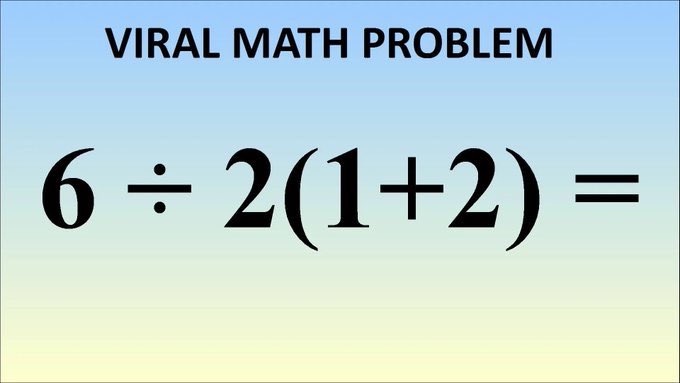So this #math equation has been floating around. I think it's actually getting at something deep.
So I wanna take this opportunity to talk about some properties of arithmetic we take for granted and how they're sometimes not true. Let's do this, #scicomm
So I wanna take this opportunity to talk about some properties of arithmetic we take for granted and how they're sometimes not true. Let's do this, #scicomm

Typically addition and multiplication, i.e., + and x, are COMMUTATIVE and ASSOCIATIVE. But they don't have to be. Let's break down what each of these mean. For the sake of simplicity, I'll use × for everything, but it also applies to addition.

Commutativity means that
A×B = B×A
This is true for numbers. I e.,
2×3=3×2=6
But it's not true for matrix multiplication or (for example) for more abstract operator multiplications in group theory and quantum mechanics.
A×B = B×A
This is true for numbers. I e.,
2×3=3×2=6
But it's not true for matrix multiplication or (for example) for more abstract operator multiplications in group theory and quantum mechanics.

Associativity means
(A×B)×C = A×(B×C)
Where you do the operation in the parentheses first. This is true for the numbers we're used to. I.e.,
(2×3)×4 = 6×4 = 24 = 2×12 = 2×(3×4)
But it's not true for decimal numbers on a computer. Meaning programmers have to worry about this!
(A×B)×C = A×(B×C)
Where you do the operation in the parentheses first. This is true for the numbers we're used to. I.e.,
(2×3)×4 = 6×4 = 24 = 2×12 = 2×(3×4)
But it's not true for decimal numbers on a computer. Meaning programmers have to worry about this!

Both commutativity and associativity are about the order you perform operations in. Which is what that viral math question is getting at. That's why I think it's deeper than it appears. 

Our assumptions about numbers and arithmetic often work in our daily lives. But there not always true. That's one of the cool things about math. It stretches our perception of what's possible and challenges us to think in new ways. 

By the way, @kareem_carr had a great discussion on 2+2=5 in a similar vein. So check that out of you haven't. https://twitter.com/kareem_carr/status/1311310833192902656?s=19

 Read on Twitter
Read on Twitter


